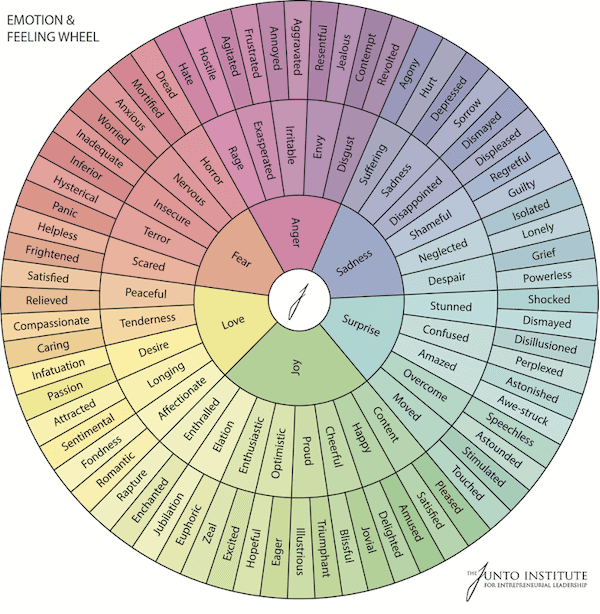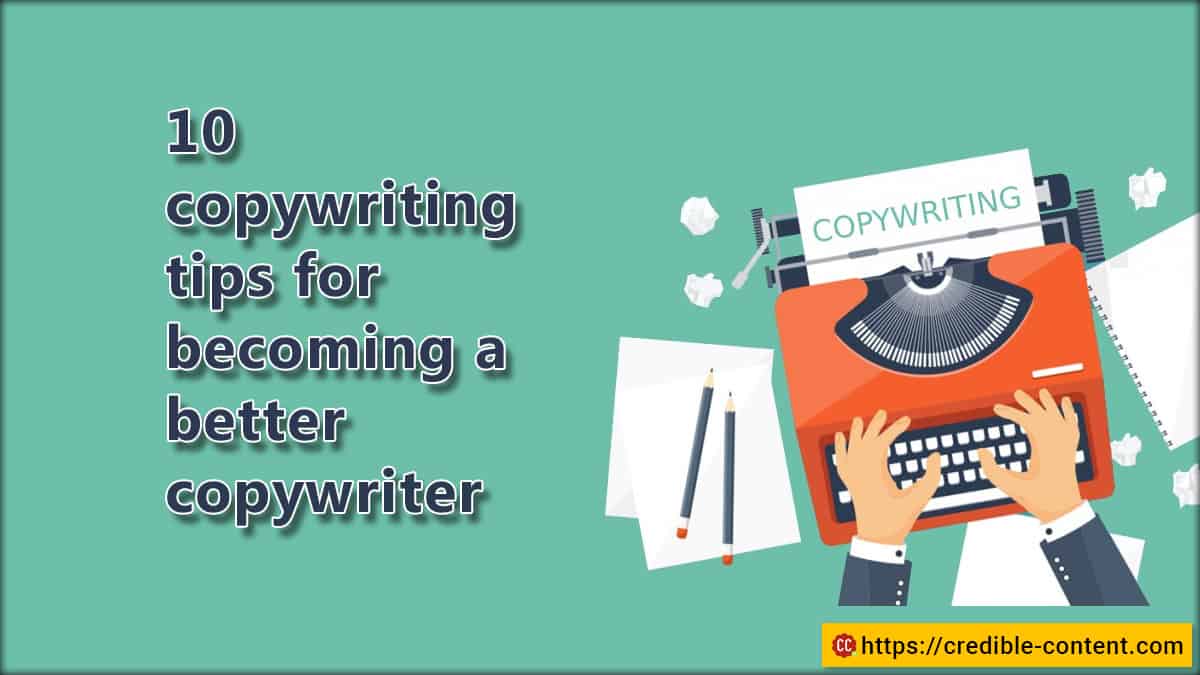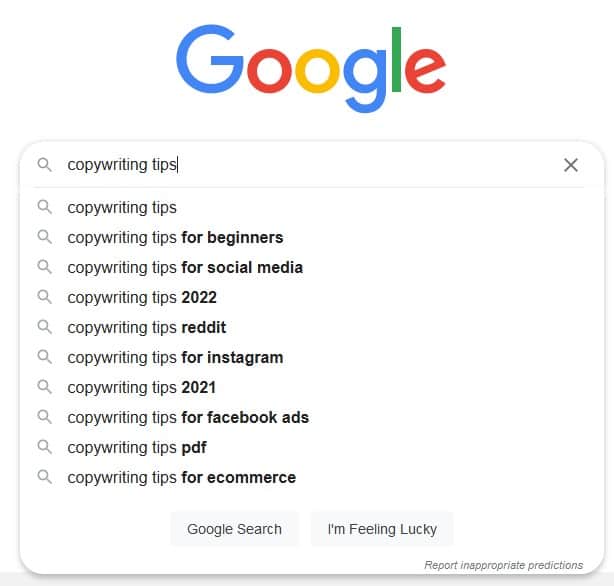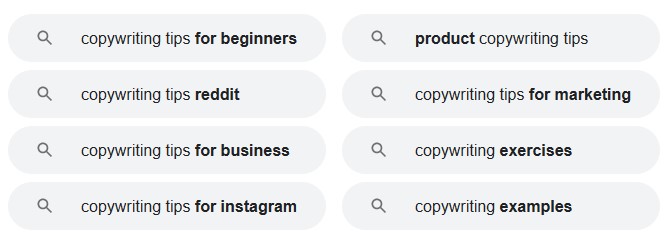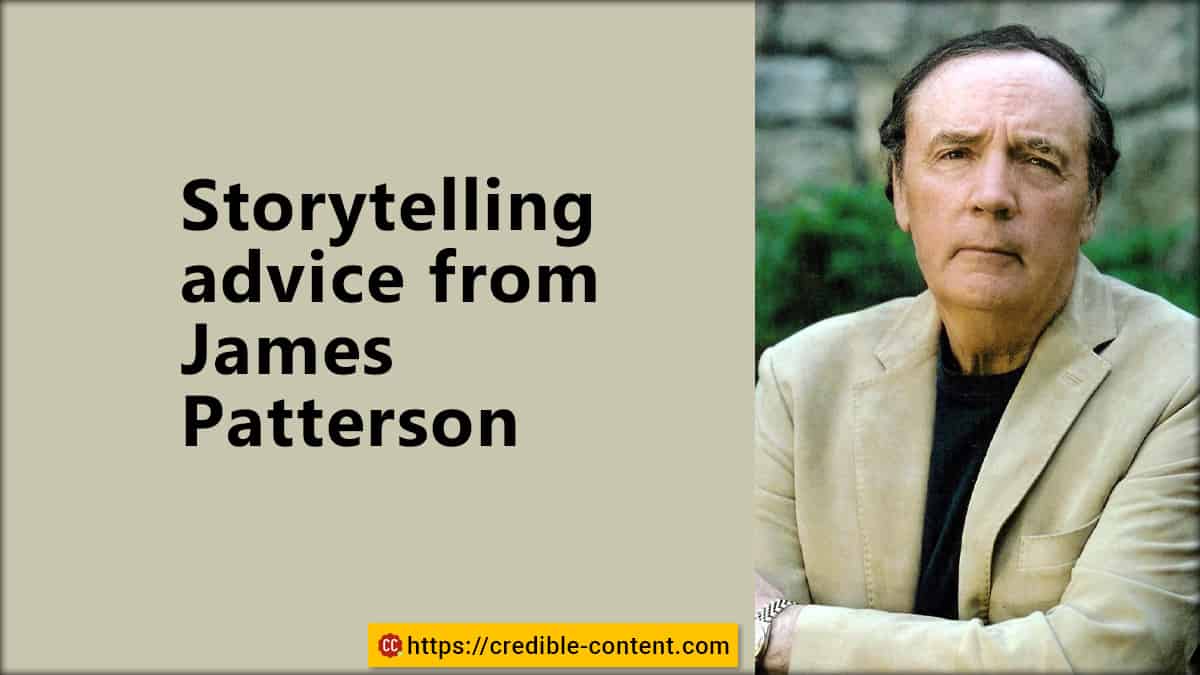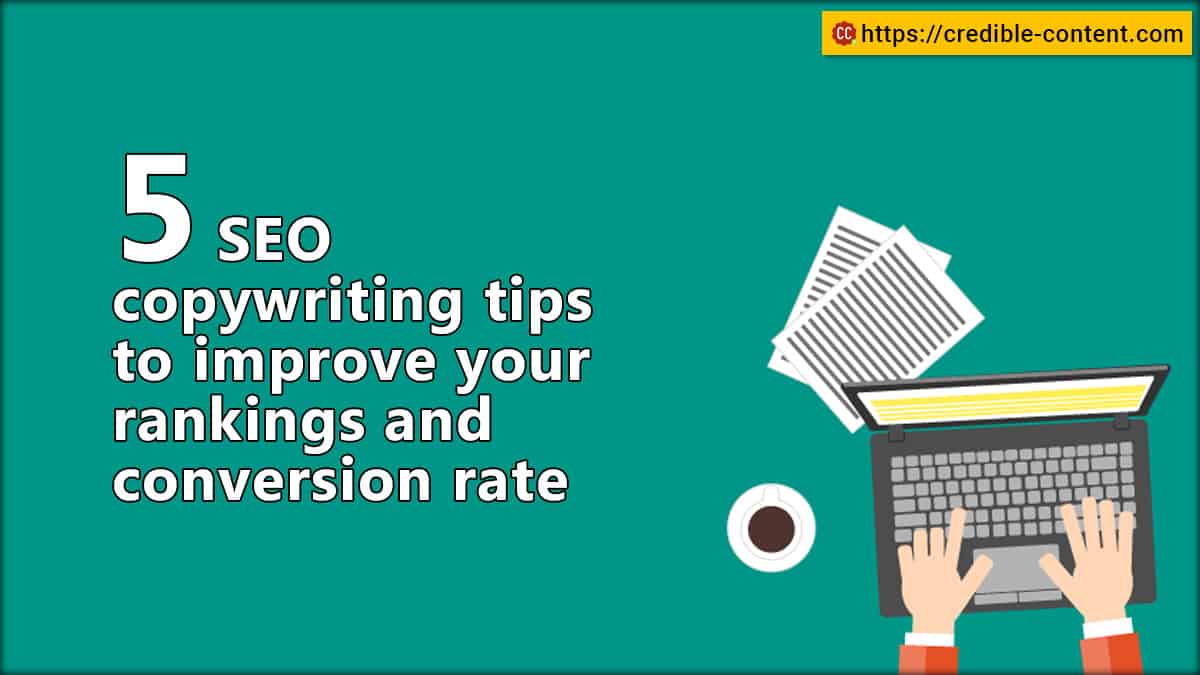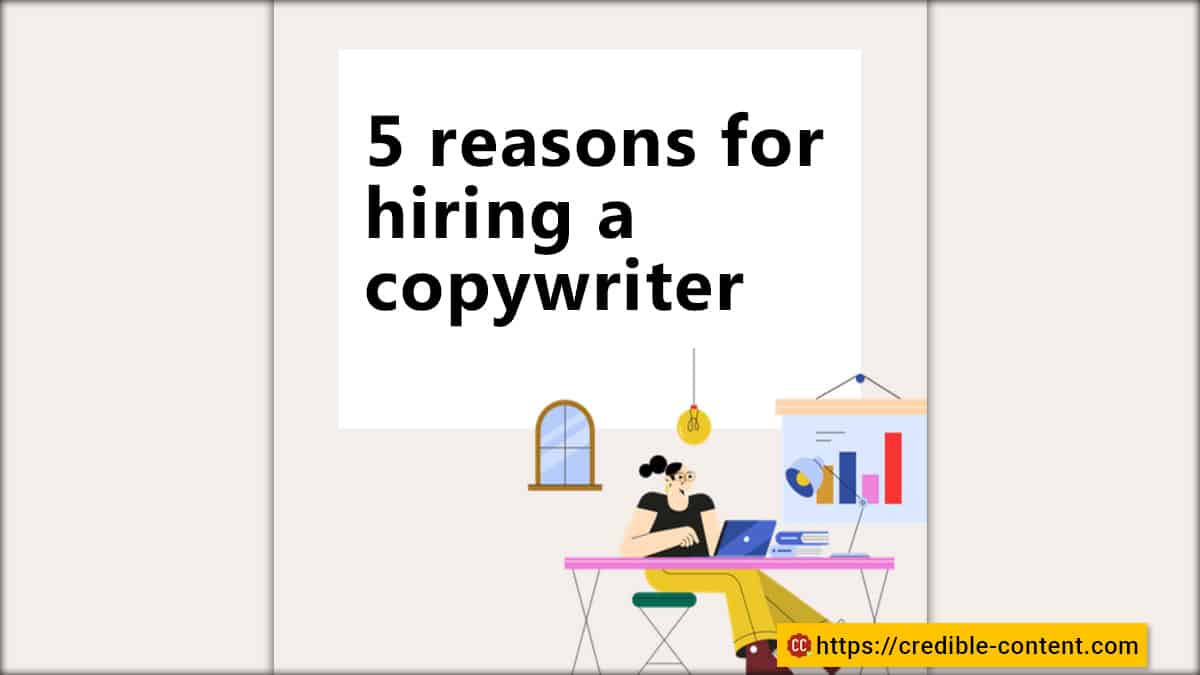If you are a new writer, it will help you a lot if you avoid the online copywriting mistakes listed in this blog post.
The online copywriting mistakes covered in this blog post are:
- Not writing a compelling headline
- Writing for yourself and not for your readers
- Not having a clear call-to-action
- Lacking emotion
- Not being specific
- Not using a conversational style
- Not making your writing skimmable
- Focusing more on features and less on benefits
- Focusing more on SEO and less on readers
- Being too salesy
Copywriting is a serious business.
When people read your copy, they buy from you or subscribe to your service.
That is, if you can convince them.
Convincing people, especially through copywriting, is one of the hardest tasks to achieve because you are making them part with their money.
Do you spend money after casually reading something?
No. You need to be completely convinced.
Even if someone asks you to spend a single dollar on something, you don’t spend casually or without being convinced.
Certain online copywriting mistakes can prevent you from convincing people or making a connection with them.
Online copywriting is different from conventional copywriting because when people read your copy on the web, there are too many distractions.
On the phone there are non-stop notifications.
On the computer there are too many links to click.
There are numerous social media updates to check.
Emails and messages are continuously coming.
There are no such problems with conventional copywriting.
There are no distractions.
There are no links to click.
No notifications.
No messages.
It is just a magazine or newspaper, or a TV screen that is completely static.
On the other hand, even a single online copywriting mistake can send your prospect away.
Therefore, mistakes, when you are writing for the web, can be costly.
Listed below are 10 mistakes you should avoid.
Not writing a compelling headline
Writing compelling headlines is so important that many experienced copywriters spend 50% of the time on coming up with the most effective headline and the remaining 50% on the remaining copy.
There are special headline analyzing tools.
Why are headlines important?
There are multiple reasons.
In online writing, I always say that there are two versions of the main headline
- The meta title that is visible to the search engine crawlers and content aggregators (such as social media websites).
- The big-font headline that you see at the top of every blog post and web page.
Your meta title draws people from search engines and social media websites to your blog or website.
Once people are on your blog post or web page, it is your headline that encourages people to read your remaining copy.
What are you offering through your copy?
Why should people read it?
What are they going to gain after reading?
Take for example the headline of this current blog post.
It tells you that it explains online copywriting mistakes that are made by new or inexperienced writers.
You want to avoid these mistakes.
So, you read this post.
Here are a few things to keep in mind when writing headlines and meta titles:
- “How to” headlines and titles performed better than other formats.
- Include your main keyword in the headline and title.
- Use power words to trigger emotions.
- Remove all redundant and unnecessary words.
- Write your headlines and titles based on what people are looking for.
- Write headlines and titles from the perspective of your customers and clients.
- Use the language used by your customers and clients.
- Keep your headlines and titles easy to understand and straightforward.
Writing for yourself and not for your readers
This mistake is often committed by new writers because they are always eager to impress and showcase their writing prowess.
Remember that when you are writing for business websites and blogs, you are not writing to display your writing abilities.
Every headline that you write, every sentence that you write, every word that you use, is intended to generate sales.
No matter how great your writing is, if it fails to impress the right customers and clients, it is not effective.
Before you start writing the main copy, do some research and understand what language your target readers use.
Do some Google research.
Note down what type of queries are popular on Google.
These popular queries usually give you a glimpse into the language used by your target customers and clients.
It is often advised that your writing should be understandable to a 6th grader.
Also, B2B and B2C copywriting are different.
You can use industry buzzwords when writing for B2B customers and clients.
Avoid using industry buzzwords and jargon when you are writing for B2C customers and clients.
Don’t use overly long sentences.
If there is even a single word that you think would require people to refer to a dictionary, remove it.
Not having a clear call-to-action
Your call-to-action is the action you want people to perform after they have read your email message or landing page.
In your copy, or in the end of your copy, you need to tell your readers exactly what they should do.
Your call-to-action must be specific.
Take for example: “Download this guide immediately to learn how to make $3000 within the next 2 weeks.”
Or: “Click here to get a free sample website.”
In the first call-to-action example I have used precise numbers – $3000 and 2 weeks – to give them a clear idea of what they stand to gain if they download the guide.
In the second example, they know that they’re going to get a free sample website.
Make sure you don’t overpromise in your call-to-action.
Don’t oversell and don’t undersell.
Capture the imagination of the reader.
What is the strongest desire of your target reader and then capture the desire in the call-to-action.
Use emotions like fear of missing out (FOMO), scarcity, curiosity, and greed, to motivate people to react to your call-to-action.
Never use multiple call-to-actions in a single email and on a single landing page.
If you want people to download your e-book, stick to that.
Don’t alternate between “Download e-book”, “Click the link”, or “Contact us for more information”, and so on.
This is distracting and confusing.
When people are offered multiple call-to-actions they opt for none.
Here are some examples of call-to-action you can use in your email or on your landing page
- Download the app
- Add to cart
- Shop now
- Join for free
- Learn more
- Get n% off
- Get started
- Subscribe now
- Save $25 now
- Explore further
- View Demo
- Contact us
- Book your seat
- Continue to read
- Go premium
- View portfolio
- Read White Paper
Again, don’t use multiple call-to-actions in a single email or on a single landing page.
Lacking emotion
Selling and buying are all about emotions.
Rarely it happens that people make a buying decision based on facts.
Yes, facts are important.
You need technical information.
You need a list of features.
But eventually, it is the emotion that decides whether one purchases or not.
Copywriting is mostly about emotions and psychology.
If emotion is lacking in your copy, you cannot make a connection with your readers.
Without making an emotional connection, it is near to impossible to make them spend money on your product or service.
Emotions in your copy can exist in different forms:
- Different types of fears – danger, missing out, losing money, not making enough money and so on.
- Not having a social life
- Failure
- Guilt
- Rejection
- Anxiety
- Desire to achieve something
- Desire to become someone
- Desire to experience something
- Anger
- Sadness
At the top, capture the right emotion in your headline.
What are they going to achieve?
How is it going to make their life easier?
They may get smarter.
They may improve their search engine rankings.
They may make more money or save money.
They may get a healthier body and a fit physique.
They may improve their relationships.
They may win the heart of their childhood sweetheart.
They may have a more fulfilling relationship with their spouse, siblings, or co-workers.
They may be able to go to a long-awaited vacation.
They may save time that they can then spend on their hobbies or making more money.
Hook them with a compelling reason to read on.
While it is advisable to use lots of emotional and power words in your copywriting, make sure you don’t overdo.
To achieve a balance, sound genuine.
You actually want to help people.
You actually want to help them make more money.
You actually want to help them become better writers.
Not being specific
You need to tell people exactly what they are getting out of your proposition.
You need to be specific.
In no uncertain words, they want to know what your offer stands for and what it does for them.
What is specific: “You are going to make $3000 in 2 weeks” or “You’re going to make lots of money very fast”?
Naturally the former.
Which is more specific: “Get thousands of subscribers with our method” or “Get 6000 subscribers in one month with our method”?
The latter, of course.
“Guestimates” don’t work in copywriting.
Give them concrete facts.
Concrete facts are psychologically reassuring.
It helps them paint a definitive picture.
It gives them clarity.
Specifications with statistics are ideal for case studies, headlines and testimonials.
A testimonial saying, “I saved 20 hours last month using this time tracking mobile app” is far better than a testimonial saying, “I saved hours of work last month using this time tracking mobile app”.
Sometimes you need to exercise discretion when using specificity.
Suppose you are offering a weight loss solution to your readers.
You cannot suddenly tell them that they can lose 20 kg of weight in 3 weeks unless it can be medically proven.
You can get into legal troubles.
You can endanger lives.
But in all other situations where you are sure of the numbers you are using, don’t hold yourself back from using them.
Even if you don’t have numbers, seek them.
Verify them.
Don’t just randomly use statistics.
Always get them from proven facts or from authoritative sources.
Not using a conversational style
You need to write as if you’re talking to the other person.
Conversational writing gets you higher response.
It appears genuine and authentic and it allows you to make an emotional connection with the reader.
Avoid using formal writing.
People can easily relate to what you are saying if you can write in a conversational manner.
Conversational writing doesn’t mean you use slangs and hanging words the way you actually use in conversation.
On the other hand, you should use phrases like
- Awesome, right?
- I will tell you what happened…
- This is how the story goes…
- Then something suddenly changed.
- You won’t believe what happened.
- You know, it wasn’t always like this.
- You won’t be able to resist.
- I totally get you if you’re cynical.
Use shorter sentences.
Make your writing easy to read.
Never use words that you don’t use in your day-to-day conversations.
How do you know that your writing sounds conversational.
Read out loud.
You can also use a text-to-speech tool.
If what you are reading out loud doesn’t sound natural, it is not conversational.
If you can easily say what you have written, it is conversational.
Conversational writing helps you
- Make a real connection with your readers.
- Use emotional and power words.
- Write in a manner as if you’re talking to someone face to face.
- Cater to the needs and desires of your readers.
Not making your writing skimmable
Skimming means people don’t read every word that you have written; they just go through the headline, subheadings, images, and the main highlights.
Most people won’t read completely.
They will read the first few sentences.
They will read the headline.
They will quickly browse through the main highlights.
This is how they read.
Even search engine crawlers sometimes read in that manner.
Therefore, it is good for your search engine rankings if you make your writing skimmable.
How do you do that?
You may like to read: How to make it easier for people to read your blog posts
Capture all the main points you are covering in the subheadings.
Use block quotes whenever you think that certain text shouldn’t be missed by your readers.
Express multiple points that are logically related to each other using bulleted lists.
Avoid using large and difficult words that take time to pronounce or say.
Write short sentences that are easier to read.
Write in the conversational style.
Tell stories of how your product or service has changed lives instead of simply spewing facts and figures.
Use sufficient whitespace between paragraphs and lines.
Write in the manner of questions and answers to keep readers hooked.
The idea is that a reader should be able to understand what you are conveying by simply going through all the highlighted portions of your copy.
Making your text skimmable also makes it easier for people to read your web pages, landing pages, emails, and blog posts on their mobile phones.
Skimmable text is less distracting and less tiresome.
Focusing more on features and less on benefits
Features can be quite alluring.
It is fine to tell people how many reports your accounting software can generate, and you must.
But along with that, you should also tell them how much time they are going to save using this reporting feature.
So, instead of saying, “You can generate 107 different reports with our accounting software,” you should say, “The 107 different reports that our accounting software generates can save you 3 days of work every month.”
Here is another example: “Our phone comes with 256 GB of memory – no need to frequently delete your photos and videos to make space.”
People want convenience.
They want to save time and be more productive.
They want to achieve more.
They want to remain healthy.
They want to cherish their memories.
They want to look smart in front of others.
They want to impress someone.
Take for example the iPhone and other phones.
It is known that the iPhone comes with less megapixels camera than the other phones.
Still, its photographs are exceptional.
The benefit is that people can take photographs in lowlight despite the less megapixels camera.
This is a benefit.
I’m not saying that you skip features completely.
But write your copy in such a manner that whenever you mention features, you also mention the benefits.
Focusing more on SEO and less on readers
This is a typical mistake committed by new writers.
The client tells them that search engine rankings are important.
They are given a list of keywords to focus.
They are asked to write the copy based on those keywords.
All they are interested in is improving search engine rankings for those keywords.
Let’s be frank: search engine rankings are important.
Every business requires targeted traffic from Google and other search engines.
But search engine traffic alone does not generate business for you.
Focusing too much on search engine traffic is counterproductive.
You need to deliver on your promise.
People must derive value out of your writing.
Even for better search engine rankings, you need a lower bounce rate.
Even if people find your link in search results, come to your website or blog, and then immediately leave, this harms your search engine rankings.
To tackle this pervasive problem, Google is rolling out a new, “Helpful Content” algorithm update.
Lots of people are producing content just meant for search engine rankings.
This content doesn’t deliver any new value.
Through this new algorithm, Google will downgrade the rankings of such websites and blogs.
It will give more prominence to web pages and blog posts that deliver on their promise.
Write engagingly.
Write human-first content.
Make people your priority when writing.
Let SEO be natural and organic.
Being too salesy
If after every couple of sentences, you are asking people to buy from you or use your service, they are put off.
The goal of your copywriting must be to convince people that you are trying to help them and not take away their money.
When people are reading your copy, they are constantly asking, “What’s in it for me?”
You must convince your potential customers that they are going to get much more than what you are asking them to spend.
For that you need to persuade them.
You may like to read: 4 Ps of persuasive copywriting
The decision-making process (acting on your call-to-action) happens in your customer’s mind.
You must facilitate the process through your writing without forcing it on the customers.
Educate your customers.
Back your claims with data and testimonials.
Highlight the benefits.
Talk in their language.
Address all their concerns.
Provide answers to all their questions.
If you are continuously asking them to hire you or buy from you, it will creep them out.
It doesn’t mean you don’t use your call-to-action.
What is your call-to-action after all?
In many cases, it is asking them to buy from you.
But use it only when you feel that after reading what you have written, they would like to proceed.
Don’t just randomly throw in your call-to-action or ask them to buy from you.
This ends my list of online copywriting mistakes that you should avoid as a new writer.
Never forget that you need to put the interest of your readers at the forefront of your writing.
Set a definitive goal.
Decide what you want to communicate.
Understand what your readers are looking for and what motivates them the most.
Write in a language they can easily understand.
Most importantly: deliver on your promise.



